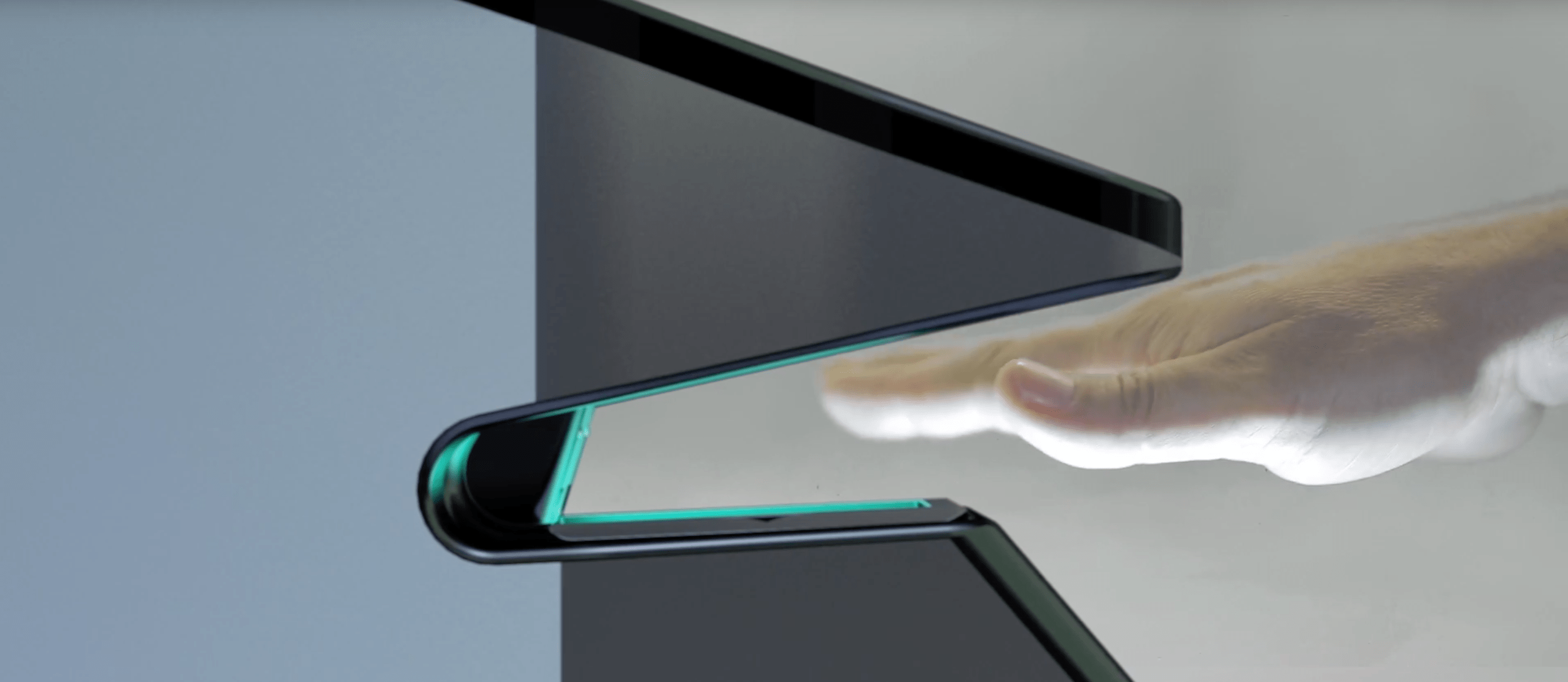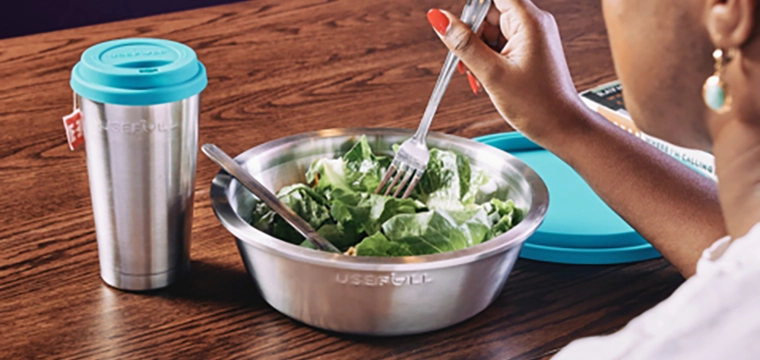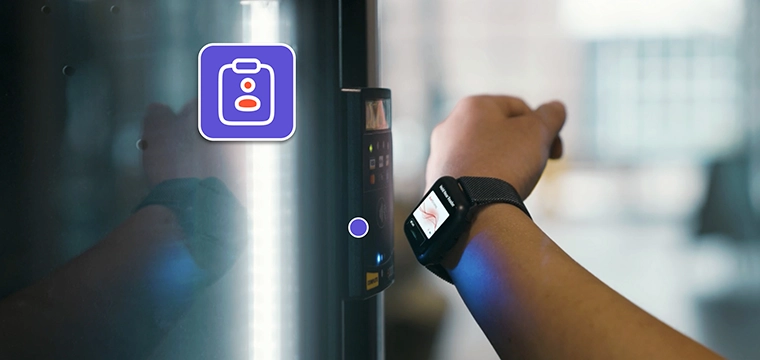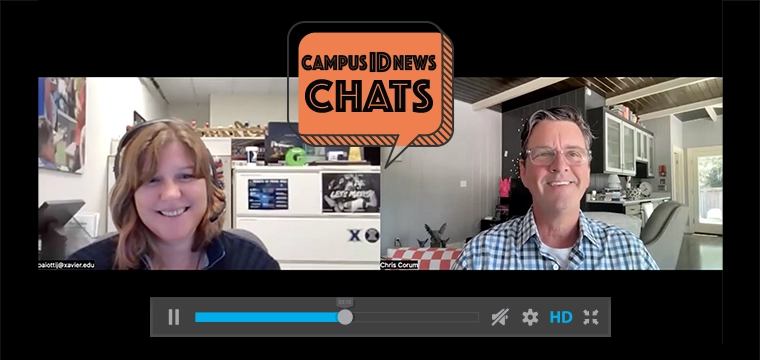
CBORD solution secures unlimited meal plan, expedites customer throughput
Maryland Dining Services has deployed ten MorphoWave biometric readers across campus. The university opted for the MorphoWave Tower units that stand on their own at roughly waist height.
“We have nine MorphoWave towers spread across the original three dining halls and one in our athletic facility’s dining hall,” says Ming. “We also have four portable enrollment stations that connect to a laptop, and via the campus’ secure wireless network, connect back to the biometric server that’s interfaced with our CBORD system.”
The university’s smallest dining hall can get away with having just two MorphoWave towers connected to two turnstile lanes. The next largest has three towers and three lanes, with the largest hall having four.
“We connect each system back to the CBORD door access system which is integrated into the transaction processor,” says Ming. “Each valid entry is translated into a meal transaction within the CBORD host, which was very easy to setup.”
"Waving their hand without touching anything and seeing the door ‘magically’ open; they were very, very impressed. I literally watch a few students leap for joy when the turnstile opened!"
“We added a pass-back delay to prevent a student from waving their hand twice — once for their friend and once for themselves,” he explains. “With an unlimited, anytime access plan, they could technically feed their entire family if we didn’t build in this feature. We were able to create this system rule ourselves using our prior experience with CS Gold.”
Ming’s advice for a campus considering this type of deployment:
These are important considerations because, as Ming admits, the deployment wasn’t without it’s nervy moments.
“When we first went live with the MorphoWave, I was very nervous. My big concern was performance – I wanted a two-second response time from the reading of the four fingerprints to the opening of the turnstile glass doors,” explains Ming. “It was a little sluggish at first, but after pushing an update to the towers’ firmware and upgrading to the latest version of the MorphoWave software, performance levels reached our expectations. The odd transaction takes 3-4 seconds, but the vast majority come in under two seconds.”
Despite the undeniable “cool” factor and the admiration that an advanced, tech solution garners from the contemporary student, one fact remains: it has to get the job done. And in that respect, the biometric solution passes the test for Maryland.
“We achieved our primary goal of having a system in place that definitively identifies the specific student who paid for an unlimited, all-you-care-to-eat dining plan,” says Ming. “The lines actually move faster than before, since nothing has to be rung-up by a cashier and we also eliminated the need for multiple POS terminals, reducing it to only one per dining hall.”
After the initial deployment in Maryland’s dining halls, the Department of Intercollegiate Athletics has asked for MorphoWave towers in the existing training table facility, which Dining Services operates, Ming says. There are now plans to add an additional MorphoWave tower at a new athletics facility, currently under construction, which will include a dining area.
So what about that “cool” factor? From the first time students returned to campus and were greeted by the new biometric system, Ming recalls it being an instant hit.
“Waving their hand without touching anything and seeing the door ‘magically’ open; they were very, very impressed,” he says. “I literally watch a few students leap for joy when the turnstile opened! Parents and students have both been impressed.”
Overall adoption and acceptance of the system at Maryland has been overwhelmingly positive, with just four or five students voicing concern over ‘storing fingerprints,’ says Ming. “The biometric system doesn’t store images of fingerprints," he stresses. "It creates a template at the time of enrollment, and that template is what’s found by the system when students wave their hand at the reader.”
In a recent survey conducted internally by CBORD, 48% of the universities polled indicated they already have plans to implement or expand the use of biometrics on campus. It’s a figure that doesn’t exactly surprise CBORD or Urban.
Urban adds that just over 10% of CBORD’s CSGold clients are currently using some form of biometrics on campus. "We’re definitely seeing more customers using biometrics and doing so with both our CSGold and Odyssey platforms.”
“Biometric readers have the ability to deliver the highest security and reduce entry lines to facilities during peak times,” says Urban. “This will always be a challenge that campuses will want to address, and CBORD sees biometric solutions as a tool that universities can use to deliver a better student experience now and in the future.”
Coinciding with this article is an informative, FREE webinar hosted by CBORD that discusses in greater detail Maryland’s use of the MorphoWave product. Webinar attendees will hear from both Fuller Ming and Wesley Urban about the deployment. The webinar is scheduled for Wednesday, January 30 from 2:00–3:00 p.m. EST. Register here.




